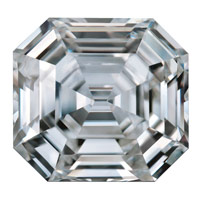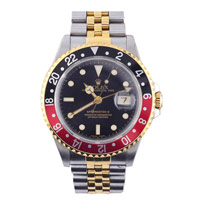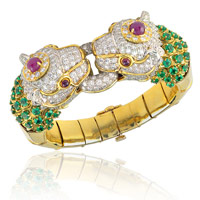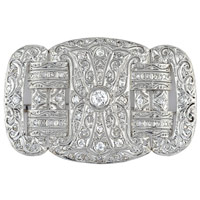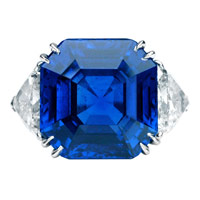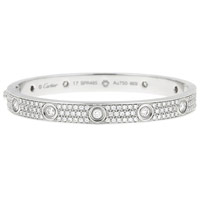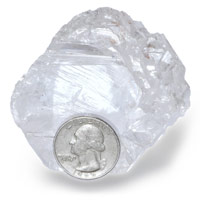EXPERT SERVICES
GCAL is frequently sought as gemological consultants and appraisers by legal, insurance, government & banking institutions.
GCAL's founder has been called upon to testify as an expert witness in major court cases around the world.
GCAL is frequently sought as gemological consultants and appraisers by legal, insurance, government & banking institutions.
GCAL's founder has been called upon to testify as an expert witness in major court cases around the world.
DAMAGE & RESTORATION ADVISORIES
Despite being the hardest gemstone, unfortunately diamond can chip, crack and break. When this happens, get the answers you need to make an informed decision about the next steps to take. Should the item be repaired or scrapped? What is the estimated loss of value? Is there evidence pointing to the cause of damage?
Let our experts talk you through the process and help you understand all your options. Our detailed reports document forensic evidence of all the facts and our expert opinion about the projected outcome of restoration. Reworking facet alignments and repolishing can eliminate most damage with minimal weight loss. We provide valuations for loss of value and improvement factors.
Normal "wear and tear" is typically not covered in most insurance policies covering some of your most treasured jewelry assets. We highly recommend that all consumers and owners of fine jewelry consult your professional jeweler for care and cleaning your fine jewelry. Also, see our chart below that may help you understand that all jewelry is susceptible to wear and tear, and in some cases, serious damage.
Urban legend and gemological facts are sometimes intertwined to cause confusion. For instance, Diamond is the hardest natural substance known to man....that's a FACT! This fact has created a misnomer in legend, that diamonds are all but indestructible... that's FALSE! In fact, most diamonds reveal chips, bruises, fractures, scratches, and abrasions after being worn daily as engagement rings for a relatively short period of time. Some of these aforementioned maladies can be considered damage (which is covered by most fine jewelry policies). This is why forensics in gemological analysis and documentation becomes so important. GCAL is at the forefront of such analysis and is recognized internationally.
A few examples of causes of damage are normal wear and tear, manufacturers defect, poor cutting proportions, and original clarity defects (pre-existing conditions, inherent vice).
The images and captions below highlight a case of a manufacturer's defect, caused by poor setting, with serious gemological and financial implications.
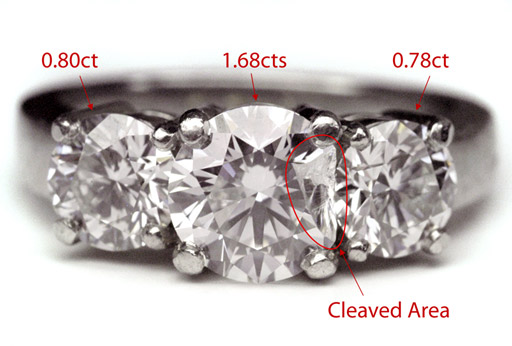
The image above shows an overall view of the ring. Within the red circle one can see the center diamond cleaved on one side nearly from prong to prong. The cleaved section extends vertically from below the girdle on the pavilion (under side) to the table facet edge on the crown. The side diamonds are set lower than the center diamond, which is a common practice for aesthetic reasons.
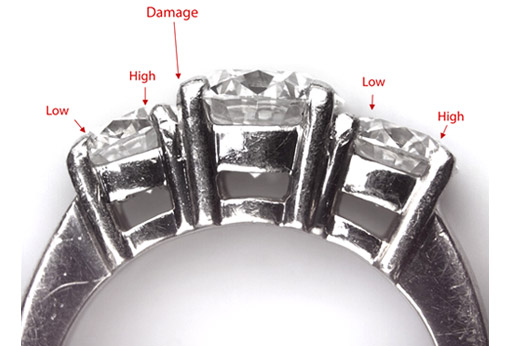
The image above shows a profile of the ring and the diamonds as they were set into the ring by the jeweler. It is important to note how the diamonds were seated before bending the prongs over the crown of the diamonds. In this image the 0.78 carat diamond is on the left. Looking at the girdle edge one can easily determine that the diamond was set lower in the prongs on the outside (low - far left) than the right side (high). The girdle edge of the 0.78 carat side diamond was pressed directly into the pavilion of the center diamond. Looking at the profile of the center diamond one can clearly see there is no diamond showing to the left of the center prongs. This is where a substantial piece of the diamond cleaved away. On the right side of the center prongs one can clearly see the rounded edge of the diamond hovering over the 0.80 carat diamond. While observing the setting of the 0.80 carat diamond, one can see that the diamond is set slightly lower on the inside prongs, and slightly higher on the outside prongs. These are marked on the photo.
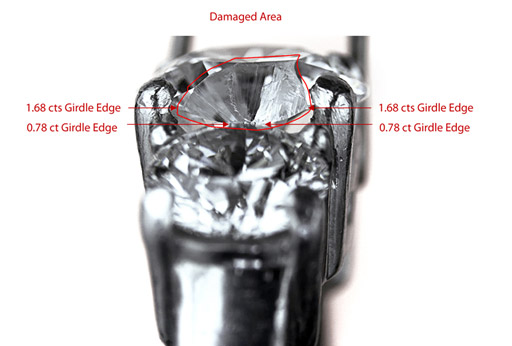
The image above shows another view illustrating that the damaged area extends below the girdle of the center diamond to the contact point of the 0.78 carat side diamond. The girdle of the 0.78 carat diamond is touching the bottom of the damaged area of the 1.68 carats center diamond. This view also illustrates the wedge shaped void into the side of the diamond from the mid-pavilion all the way up to the table facet of the center diamond.






